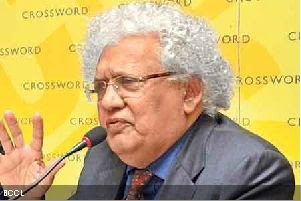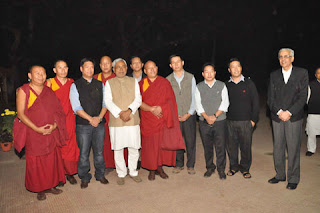
While Chief Minister Nitish Kumar might think roadblocks in the path of Nalanda University have been cleared, and Amartya Sen might claim that first two schools will start functioning in 2014, the Nalanda University thinks it can do without academic staff. The low priority assigned to the recruitment of academic staff is evident from the perusal of the Nalanda University Statutes, 2012.
The Statutes are byelaws framed in pursuance of the Nalanda University Act, 2012 for functioning of the University. They define the powers, tenure, and mode of appointment different officials. The focus is on Governing Board, Chancellor, Vice Chancellor, Registrar, Finance Officer and International Advisory Panel. The omission of mode of recruitment for academic staff, despite having taken longer time to frame the Statutes than allocated, reflects on the intention of the Governing Board.
The issue of Academic Staff is disposed off within one paragraph under Section 14 of the Nalanda University Statutes, 2012. It states only the obvious that the Vice Chancellor, Professors, Assistant Professors and Visiting Professors will be members of the Academic Staff. Their mode of appointment remains unspecified. The appointments are generally done through Selection Committee, whose composition is specified under the UGC Regulations.
The Central Universities Act, 2009 lays down its Statutes in its Second Schedule. The Section 18 lays down composition for Selection Committee meant to appoint Professors, Associate/Assistant Professors, Registrar/Finance Officer/ Controller of Examination, Librarian, Principal of College or Institution maintained by the University. The Section 19 provides exception to the rules whereby Executive Council may invite a person of high academic distinction and professional attainments to accept a post of Professor or Associate Professor or any other equivalent academic post.
The Nalanda University Statutes, 2012 in Section 3 (l) under Powers and functions of the Governing Board says that Governing Board has the power to appoint Professors, Associate Professors and Assistant Professors or the recommendation of Selection Committee. But it makes abundantly clear that ‘it shall not be necessary to constitute any Selection Committee for making appointment to the post of Professor of a person of high academic distinction, eminence and profession attainment by the Governing Board to accept the post’. High academic distinction and eminence are evidently judged subjectively rather than objectively in a University whose Vice Chancellor is a Reader who has never taught Post Graduation level students.
The Nalanda University Governing Board, who framed these Statutes, is dodgy on formation of Selection Committees but specific on seeking exemption from it. The necessity of not constituting Selection Committee is stated explicitly whereas the issue of Selection Committee has been obscured.
The Nalanda University Act, 2010 under Section 28 (l) says that first Statutes would be made within six months of the commencement of Act. It was patently illegal to enforce the Act without Statutes that define powers and modes of the appointment. In case of other Universities – e.g. Central Universities Act, 2009- the Statutes contained in Second Schedule of the Act are passed as part of the Act by Parliament. The Nalanda University Act, 2010 was enforced w.e.f. November 25, 2010 but not until March 2012, when the Statutes were notified in Gazette of India the Governing Board could not come up with rules on Selection Committee.
The apparent reason behind this faux pas was that the University wanted to avoid the issue of Selection Committee but rather legitimize exemption from it. By doing so it would favour more people through crony appointments. Worse, the University is not at all serious about academics. It just want to secure the interests of chosen few officials like Chancellor, Vice Chancellor, Finance Officer, Registrar etc. The example is not far to seek. For instance under the Central Universities Act, 20o9 from which the Nalanda University Act and Statutes are copied Chancellor and Vice Chancellor are not eligible for reappointment. But under Nalanda University Statutes, 2012 the Chancellor and Vice Chancellor are eligible for unlimited number of reappointments. Under Section 12 (5) the Vice Chancellor has a retirement age of 70- from which Dr. Gopa Sabharwal is faraway. The Chancellor has no retirement age apparently because Prof. Amartya Sen does not recognize that he is well past sell-by-date. The Statutes have apparently been formulated with interests of a chosen few in mind.
Read more:http://goo.gl/BFYXl








